Vegan Guide
I’ll be honest when I first heard about lion’s mane mushrooms, I thought they were more hype than helpful. But then I tried cooking with one, and… wow. It’s got this crazy-soft texture that shreds like crab meat, a mild flavor that soaks up seasoning like a dream, and it’s surprisingly filling. For anyone eating plant-based, it’s basically the ingredient you didn’t know you needed.
This guide isn’t just about recipes (though we’ve got some gems). It’s your go-to playbook for understanding why lion’s mane is worth the hype from how to cook it without it going soggy, to what sauces make it sing, to how it supports your gut and brain without feeling like health food.
If you’re curious, craving something new, or just tired of tofu… you’re in the right place.
What is Lion’s Mane Mushroom?
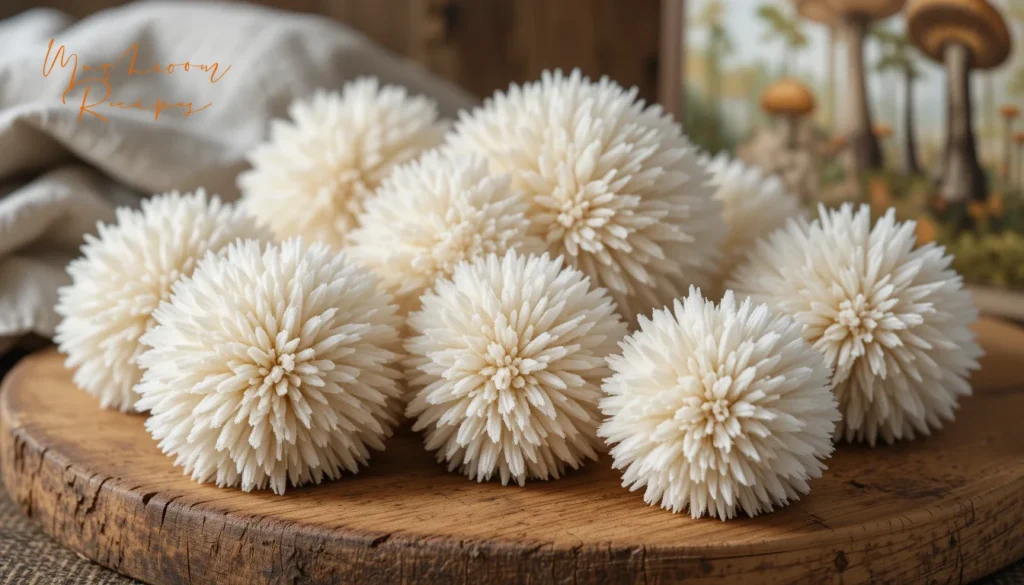
Lion’s mane (Hericium erinaceus) is one of those ingredients that catches your eye the second you see it. Big, fluffy, and almost shaggy like a pom-pom, it doesn’t look like your typical mushroom and it definitely doesn’t cook like one either.
Native to North America, Europe, and Asia, lion’s mane grows on hardwood trees and has been used in both culinary and medicinal traditions for centuries. In the kitchen, it’s prized for its ability to mimic the texture of seafood, especially crab or scallops, which is why it pops up so often in vegan crab cake recipes. But beyond the novelty, it’s incredibly practical for plant-based cooking absorbing sauces, adding bulk, and delivering a satisfying chew that many meat substitutes just can’t match.
Fresh lion’s mane is typically sold at farmers’ markets, specialty grocers, or through small mushroom farms. You can also find it dried, powdered (usually for supplements), or in grow-your-own kits, which have become super popular with home cooks.
Whether you’re into functional foods or just want something fun and satisfying to cook, lion’s mane is an ingredient worth getting to know.
Is Lion’s Mane Mushroom Vegan-Friendly?
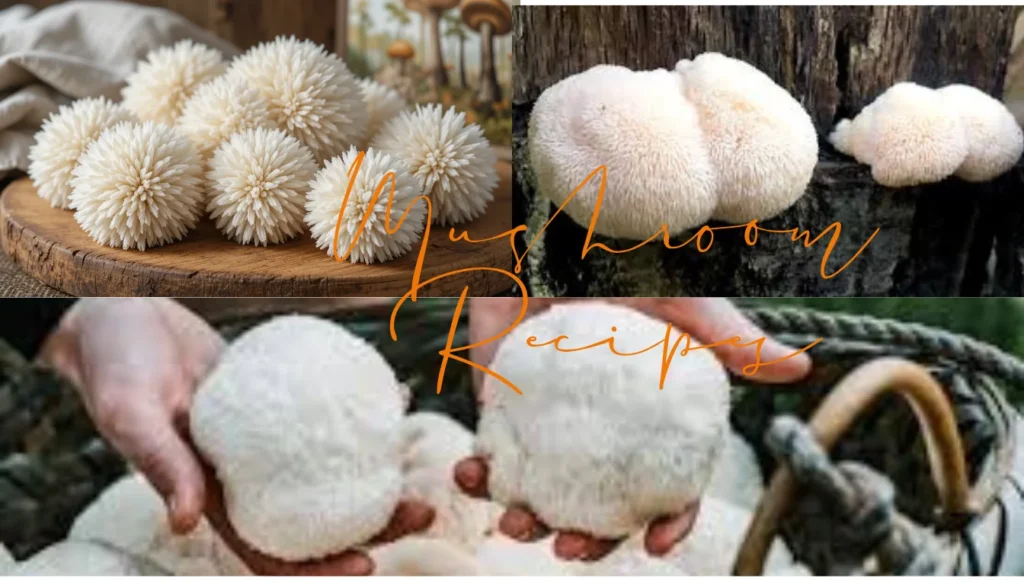
Short answer? Yes lion’s mane is 100% vegan. But let’s break it down a bit more, because I know sometimes mushrooms can raise questions, especially for people who are new to plant-based eating.
First off, lion’s mane isn’t an animal product. It’s a fungus, just like button mushrooms or shiitake. It doesn’t contain any animal-derived ingredients, and it isn’t processed using animal enzymes. So from a purely ingredient standpoint, it checks all the boxes.
But beyond that, it’s how it’s grown that gives it bonus points. Most lion’s mane mushrooms are cultivated on hardwood sawdust or logs in clean, controlled environments no pesticides, no animal byproducts. You can even grow it at home if you’re into DIY food projects, and all it needs is moisture, warmth, and time.
In the vegan world, there’s a special appreciation for ingredients that bring texture, depth, and nutrition without relying on animal products. Lion’s mane does all three. It mimics seafood texture for recipe recreations, offers brain and gut health perks, and comes from a clean, ethical source.
Health Benefits for Plant-Based Diets
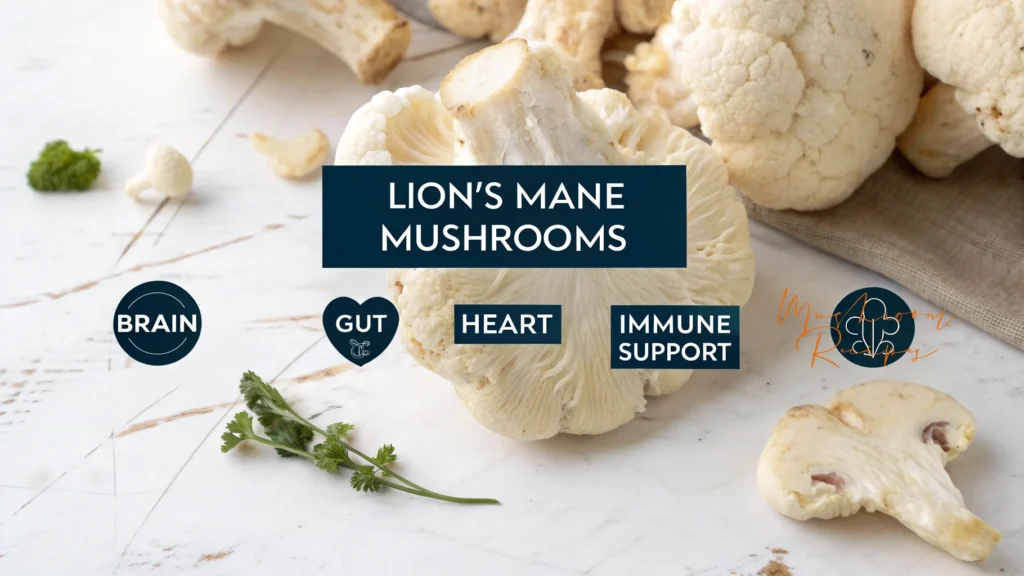
Let’s be honest eating vegan isn’t just about cutting things out. It’s about adding in the good stuff. And lion’s mane? It’s got a lot of good going on.
This mushroom isn’t just a trendy meat alternative it’s considered a functional food, meaning it can do more than just fill you up. It actively supports your body in ways you’ll actually feel.
Brain Boost (Yes, Really)
Lion’s mane contains compounds called hericenones and erinacines, which are linked to nerve regeneration and brain health. Translation? It might help with focus, memory, and mental clarity. Some people even say they feel more “clear-headed” when eating it regularly whether that’s from the nutrients or just eating cleaner is up for debate, but hey, it works.
Gut-Friendly Fiber
It’s also packed with prebiotics, aka the food that fuels your gut’s good bacteria. If you’re someone who’s ditched dairy and is trying to keep digestion smooth and regular, lion’s mane fits right in. You can read more about that in our deep dive on lion’s mane for gut health.
Anti-Inflammatory Properties
This mushroom may also help calm inflammation, which is a big deal if you’re dealing with chronic issues like bloating, skin flare-ups, or fatigue. It’s not a miracle cure, but it’s another supportive tool in your plant-based toolkit.
Immunity & Nutrient Support
You’ll also find antioxidants, potassium, some protein, and a bit of iron. Not huge numbers, but enough to complement your overall diet especially when combined with leafy greens, legumes, and whole grains.
Where to Buy Lion’s Mane

If you’ve ever tried to find lion’s mane mushrooms and struck out, you’re not alone. This isn’t your everyday grocery store mushroom at least not yet. But with a little know-how, you can track it down pretty easily.
Local Sources
Farmers’ Markets: This is probably your best bet for fresh, organic lion’s mane. It’s becoming more popular, and many mushroom growers bring it to weekend markets.
Health Food Stores & Co-ops: Some carry it in the refrigerated produce section, especially if they source from local farms.
Asian Grocery Stores: Surprisingly, many carry lion’s mane (often labeled under a different name like “yamabushitake”).
Online Options
Specialty Growers: Websites like North Spore, Smallhold, and Fungi Perfecti ship fresh lion’s mane or grow kits straight to your door.
Etsy & Local Farm Websites: A lot of small-scale growers list their harvests online. It’s a great way to support independent businesses and get super fresh mushrooms.
Grow It Yourself
If you’re the adventurous type or just like weird hobbies that result in food growing lion’s mane at home is totally doable. There are kits that come pre-inoculated with mushroom spores. Just add humidity and patience.
It’s cheaper long-term, and kinda satisfying to watch it grow like a fluffy alien on your countertop.
How to Clean and Prepare Lion’s Mane

If lion’s mane looks a little intimidating at first, don’t worry it’s easier to prep than it looks. You don’t need any fancy tools or chef skills, just a gentle hand and a little patience. And unlike some mushrooms, it doesn’t need to be peeled or soaked.
Cleaning It (The Right Way)
- Skip the soak: Lion’s mane is like a sponge it’ll soak up water and go mushy if you rinse it under running water.
- Use a damp cloth: Wipe away dirt with a damp paper towel or soft brush. Don’t overdo it if it looks clean, it probably is.
- Trim the base: The bottom can be tough or woody. Just slice off the discolored or dense end.
Prepping It for Cooking
- Tear, don’t slice: This is the magic trick. Tearing lion’s mane into small chunks or shreds brings out its best texture. It cooks more evenly, browns better, and takes on sauces beautifully.
- Press it gently: If it feels really waterlogged, wrap it in a clean towel and give it a gentle press. This helps with browning and reduces sogginess during cooking.
- Season after searing: Like tofu, lion’s mane holds onto flavor better once it’s slightly crisped.
Once you’ve cleaned and torn it, you’re ready to toss it in a pan, roast it, or air-fry it to golden perfection. If you’re not sure which method is best, head to our lion’s mane cooking techniques guide for the full rundown.
Basic Cooking Methods (Vegan-Friendly)
Lion’s mane might look unusual, but once you start cooking with it, it’s surprisingly forgiving. You can sauté it, air-fry it, roast it, or even simmer it in soup. Each method brings out a different vibe so you can match the technique to the dish you’re making.
Let’s break down the go-to vegan-friendly methods:
Sautéing
The classic. Quick, easy, and brings out that golden, chewy edge.
How to do it:
- Use medium-high heat with olive or avocado oil
- Don’t crowd the pan let it brown
- Flip once and let it get a little crispy before adding seasoning
Best for: crab cakes, grain bowls, tacos
Air-Frying
Crispy without deep-frying. This is a lifesaver if you want texture without oil overload.
How to do it:
- Toss shredded lion’s mane in a bit of oil and seasoning
- Air-fry at 375°F for about 12–15 minutes, shaking once
Best for: tacos, wraps, crispy bites, snack bowls
Roasting or Grilling
When you want that smoky, meaty finish roasting or grilling brings big flavor.
How to do it:
- Marinate first (soy sauce + garlic is always a win)
- Roast at 400°F until edges crisp up (about 20 mins)
- Or grill over medium heat in foil or a veggie basket
Best for: BBQ bowls, sandwich fillings, wraps
Simmering / Steaming
Underrated but great in soups or stews where the mushroom can soak up flavor.
How to do it:
- Add torn pieces near the end of cooking
- Let simmer for 8–10 minutes to soften
Best for: ramen, miso soup, veggie broth dishes
Don’t forget: the method you choose depends on the texture you want. Crispy? Air-fry or sauté. Tender? Steam or simmer. Bold flavor? Marinate and roast.
Need help choosing? Head over to our guide on sauté vs. air-fry for a full breakdown.
Lion’s Mane Vegan Recipes Overview

Lion’s mane is more than just a cool ingredient it’s the kind of mushroom that earns a regular spot in your kitchen once you see how many ways you can cook it. From crispy appetizers to hearty mains, its unique texture makes it perfect for vegan versions of dishes that usually rely on meat or seafood.
Here’s a snapshot of where lion’s mane really shines:
Vegan “Crab” Cakes
Arguably the most famous lion’s mane recipe and for good reason. The shredded texture is spot-on, and when seasoned with Old Bay, lemon, and a little nori? You won’t miss the seafood.
Check out our vegan crab cake recipe here for step-by-step instructions.
Stir-Fries & Noodle Dishes
Lion’s mane soaks up flavor like tofu but with a meatier bite. Toss it into a wok with garlic, ginger, tamari, and veggies for a super quick dinner. Bonus points if you serve it over soba or rice noodles.
Need ideas? Try one of these Asian-inspired lion’s mane dishes.
Burgers, Wraps & Sandwiches
You can roast or air-fry lion’s mane chunks for a crispy topping, or mash them into a patty with beans and spices. They bring that juicy, chewy “bite” that many vegan burgers are missing.
Sauce it up with options from our vegan sauce pairing guide.
Broths & Soups
Whether it’s a hearty stew or a light miso broth, lion’s mane adds both body and nutrition. It’s a nice swap for tofu if you want a little more texture in your soup.
Grain Bowls & Meal Prep
Toss air-fried or sautéed lion’s mane into quinoa bowls, pair with greens, roasted veggies, and a bold dressing done. It holds up well in the fridge too, which makes it great for leftovers.
This mushroom adapts to almost any vegan recipe you throw at it. Once you’ve cooked it once or twice, you’ll start imagining ways to work it into everything.
The Flavor Combos That Make Lion’s Mane Taste Like Magic
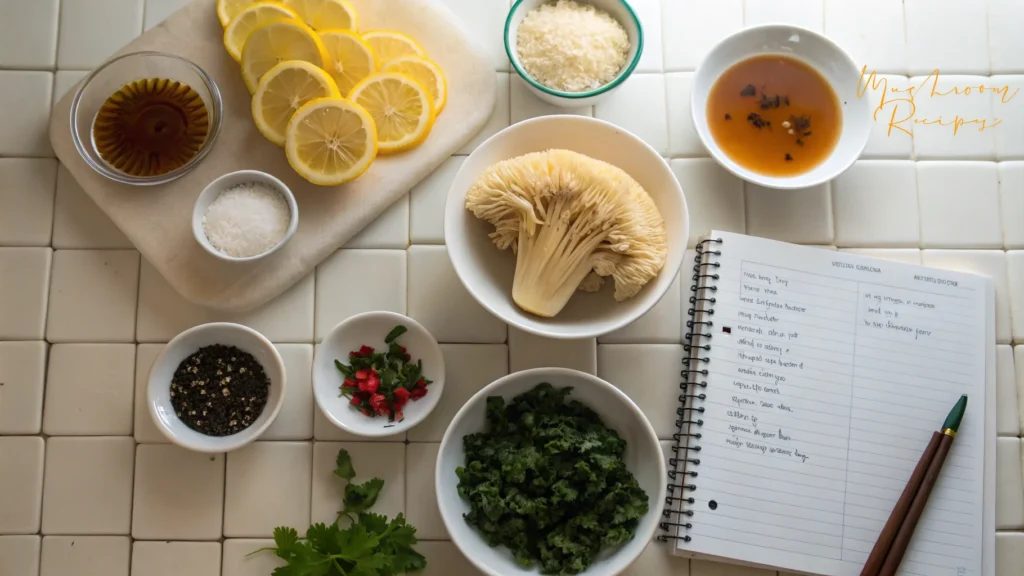
I learned the hard way that lion’s mane by itself doesn’t do a lot flavor-wise. The texture? Amazing. But the taste? It needs a little help. Once I cracked the code on pairing it with the right sauces and ingredients, though game over. That’s when it started tasting restaurant-level.
Here’s what I go back to again and again when I want to make lion’s mane actually taste as good as it feels to eat.
The Flavors That Always Hit
There are some ingredients that just click with lion’s mane. I keep these on hand because no matter what kind of dish I’m making, one or two of them instantly make it better.
- Miso or tamari – deep, savory flavor. Think instant umami.
- Lemon juice or rice vinegar – lifts the whole dish, cuts the richness.
- Cashew cream or tahini – makes everything feel indulgent.
- Chili oil, sriracha, gochujang – a little kick goes a long way.
- Seaweed flakes or capers – if I’m doing a “seafood-y” thing, these are non-negotiable.
- Fresh herbs – parsley, cilantro, dill… they just freshen it up and make it feel complete.
You don’t need all of these in one dish. Just pick two or three and balance them out. Creamy + bright + salty is a combo I use on repeat.
Sauces That Work Every Time
These are the ones I lean on when I’m not in the mood to experiment but still want something great:
- Cashew garlic sauce – rich, velvety, and so easy if you’ve got a blender.
- Miso-tahini – kind of nutty, kind of salty, kind of addictive.
- Lemon-caper aioli – absolute perfection on crab cakes.
- Chimichurri – if you’ve grilled or roasted the mushroom, this is the move.
- Sriracha mayo – my lazy-day lifesaver for sandwiches or bowls.
And hey, if you want to keep it simple? Just olive oil, garlic, and a splash of soy sauce goes a long way.
I dropped the actual recipes for these over here if you need them. Nothing fancy. Just real-deal flavor.
A Few Tricks I’ve Learned Along the Way
- Don’t drown the mushroom in sauce too early. Let it brown first, then glaze it up.
- Want it to absorb more flavor? Press it a little before cooking it’s like wringing out a sponge before using it.
- If your dish feels flat, it probably needs acid. A squeeze of lemon can fix almost anything.
- Toasted sesame oil is liquid gold. One drop too many and you’ll taste it for days but the right amount? Magic.
Cultural Recipes Featuring Lion’s Mane
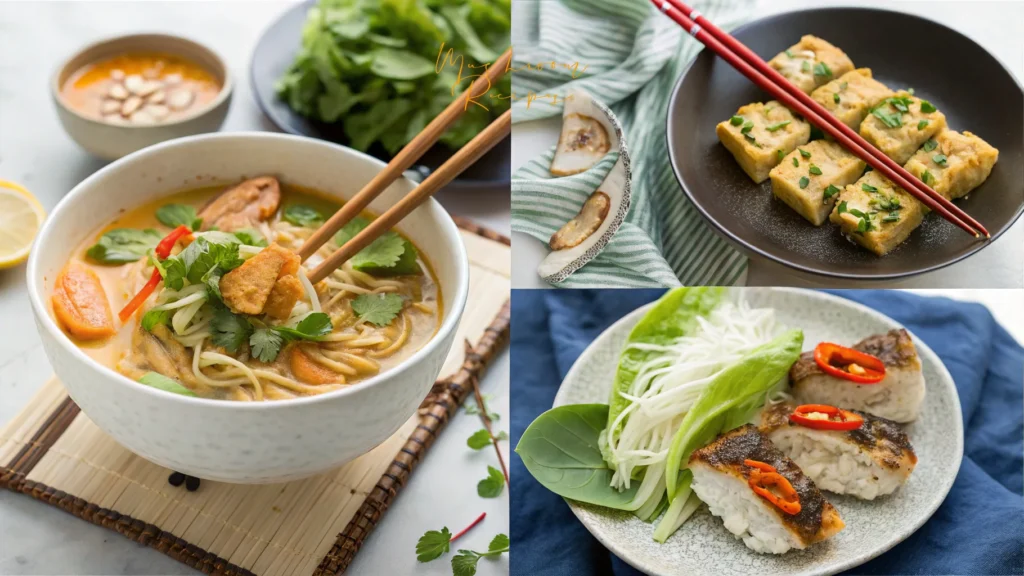
If you’ve only used lion’s mane in basic recipes, you’re seriously missing out. This mushroom fits into so many global cuisines, it’s honestly wild. Once I realized that it could stand in for meat, fish, or tofu across different flavor profiles, I started experimenting and now it’s a regular in my Thai, Japanese, Korean, and even Mediterranean-style dishes.
Let me walk you through some of the ways I’ve used it (and loved it) across different styles of cooking.
🇹🇭 Thai Coconut Curry
This one’s cozy, spicy, and rich my kind of comfort food. Lion’s mane soaks up the curry broth like it was made for it. I tear it into chunky pieces and let it simmer in the sauce with bell peppers, snow peas, and a splash of lime at the end.
Why it works: The texture is soft but chewy, kind of like seafood, which makes it feel substantial in the soup. Plus, it holds onto the coconut flavor beautifully.
🇯🇵 Miso Ramen
I’ll throw sautéed lion’s mane right on top of a hot bowl of miso ramen, usually with soft tofu, corn, scallions, and a little chili oil. I pan-fry the mushroom first so it gets a bit golden and adds that extra bite.
Why it works: It’s the perfect contrast to the softness of the noodles and broth. And you don’t have to cook it in the soup just drop it in at the end.
🇰🇷 Korean BBQ-Style Wraps
This one’s so fun: gochujang-marinated lion’s mane wrapped in crisp lettuce with rice, kimchi, and a drizzle of sesame oil. I usually air-fry the mushroom chunks after marinating so they get those crispy edges.
Why it works: The mushroom handles spice like a champ, and that chewy texture mimics meat beautifully.
🇮🇹 Mediterranean-Inspired Grilled Dishes
This is for when I’m in the mood for something herby and fresh. I grill or roast lion’s mane with olive oil, garlic, and lemon, then serve it over couscous or a tomato-cucumber salad with tahini dressing.
Why it works: The flavors are simple, but they highlight the mushroom’s nuttiness and absorbency.
Fusion is Fair Game
I’ve also thrown lion’s mane into tacos, spring rolls, pasta you name it. Once you’ve cooked it a few times and learned how it takes on sauce and texture, the sky’s the limit. Honestly, some of my best dishes have come from mashing cultures together (like Thai curry tacos… sounds weird, tastes amazing).
Lion’s mane doesn’t just “fit in” with global cuisines it thrives in them. And when you cook it with care, it adds depth and character to dishes that might otherwise feel a little flat.
How to Substitute Lion’s Mane in Vegan Dishes
Let’s say you love lion’s mane (same), but either can’t find it every time or want to stretch it into more meals. Or maybe you’re building a dish and wondering, “Can I swap this in for tofu? Jackfruit? Mushrooms I already have?” You totally can but with a few things to keep in mind.
Here’s how I’ve made it work both ways: subbing lion’s mane in, and using something else when I’m out.
When to Swap Lion’s Mane In
Lion’s mane can take the place of:
- Seafood – It’s the go-to for crab cakes, “scallops,” or anything that needs a mild, chewy texture.
- Pulled meats – Tacos, BBQ sandwiches, wraps. Just shred and cook it down like jackfruit or seitan.
- Tofu/tempeh – Want more texture but less soy? Lion’s mane gives you bite without the spongey vibe.
Bonus: It works great in dishes where you’d usually want something to soak up sauce without falling apart.
When to Sub Out Lion’s Mane
Can’t get it? These are your best vegan-friendly swaps:
- King oyster mushrooms – Meaty, easy to shred, great texture.
- Jackfruit – Especially in saucy dishes like BBQ or curry. Just watch the salt content in canned versions.
- Hearts of palm – Ideal for cold dishes or seafood-inspired recipes.
- Frozen/thawed tofu – The texture gets chewier and spongier after freezing. Press it first, and you’ll get a surprisingly close result.
Just don’t expect button mushrooms to work the same way they’re too soft and watery. Great for flavor, not for texture.
A Few Quick Tips
- Don’t over-season the sub especially if it’s a blank canvas like tofu. Let your sauce or marinade shine.
- Match textures to cooking methods: Jackfruit for stews, king oysters for searing, hearts of palm for flakiness.
- Still want the “wow” factor? Pair with one of your go-to sauces from our lion’s mane flavor guide.
You don’t need lion’s mane every time to get the same vibeit’s all about understanding the textures and flavors. Once you’ve got that down, you can swap in and out based on what you have on hand or what your budget allows.
Meal Planning with Lion’s Mane
If you’re like me, you don’t want to stand in the kitchen wondering what to cook every night. Enter lion’s mane it’s one of those ingredients that can easily slide into your weekly meal plan without a ton of extra prep. Whether you’re batch cooking, feeding a family, or just want something satisfying after work, this mushroom pulls its weight.
Let me show you how I use it during the week without overcomplicating things.
Weeknight Dinner MVP
When I’m short on time (which is most nights), I’ll sauté or air-fry lion’s mane and build a quick bowl around it. Something like:
- Cooked grain (rice, quinoa, farro)
- Sautéed lion’s mane with garlic and tamari
- Leftover roasted veggies
- Quick drizzle of miso-tahini sauce
Takes maybe 15 minutes and tastes like I actually tried.
Meal Prep Magic
This mushroom keeps surprisingly well once it’s cooked. I’ll make a big batch of roasted or air-fried lion’s mane on Sunday, store it in an airtight container, and use it all week like this:
- Toss into wraps with hummus and greens
- Reheat for tacos or sliders
- Add to leftover soup or stew
- Stir into warm soba noodles with chili oil and lime
It reheats best in a skillet or toaster oven. The microwave works too, but you might lose a little crisp.
Make-Ahead Tips
- Cook first, then store – it lasts longer this way
- Don’t sauce it all at once – keep sauce on the side to preserve texture
- Freeze cooked pieces – especially if you sautéed them first. Great for quick add-ins later
Meal planning with lion’s mane isn’t about overthinking it it’s about having a flavor-packed, nutrient-rich base ready to go when the week gets chaotic.
Lion’s Mane for Gut Health
I didn’t start eating lion’s mane for my gut I just thought it looked cool and cooked up like crab meat. But after a few weeks of tossing it into my meals, I noticed something weird: less bloating. Like, noticeably less. My digestion felt smoother. I wasn’t looking for that… but I wasn’t mad about it either.
Turns out, lion’s mane actually does quite a bit for your gut. And it’s not just one of those “superfood” buzzwords either.
Feeding Your Gut the Good Stuff
Here’s the deal: lion’s mane has these natural fibers polysaccharides, if you want to get nerdy that act like food for your gut’s good bacteria. They’re called prebiotics, and they help balance your gut over time.
I’m not talking about a miracle overnight fix, but when you eat it regularly (a few times a week in my case), things just… move better. Less cramping, less gas, and I don’t feel heavy after meals.
It Might Help Calm the Chaos
There’s also some buzz about lion’s mane reducing inflammation in the gut lining. I’m no scientist, but I can tell you this: on the weeks I eat it more, I feel less “off.” Like, not as bloated or irritated after heavier meals. And if you’re someone who deals with digestive drama, even little wins like that are huge.
What I Eat It With
This is where it gets fun. When I want to treat my gut right without eating like a monk, here’s what I do:
- Sauté it with a bit of garlic and throw it on a grain bowl with fermented stuff (I’m big on kimchi)
- Slice it into miso soup with soba noodles and a handful of greens
- Toss it into a rice bowl with tahini, lemon, and a sprinkle of flax or hemp seeds
Nothing fancy. Just simple combos that taste good and leave you feeling good.
If you’re eating plant-based and trying to stay in tune with your digestion, this mushroom is an easy win. It’s functional, flavorful, and honestly? Kinda comforting.
Mistakes to Avoid When Cooking Lion’s Mane

Lion’s mane is super forgiving as far as ingredients go but there are definitely a few ways to mess it up. I’ve done most of them, so here’s your shortcut to skipping the frustration and getting it right the first (or second) time.
Washing It Like a Vegetable
This one’s big. Don’t rinse lion’s mane under the faucet. It’s basically a sponge, and once it absorbs too much water, it turns into a soggy mess. You’ll never get a good sear. Use a damp towel or brush to clean it gently trust me, it’s enough.
Not Pressing It Before Cooking
Even if it doesn’t look wet, lion’s mane holds onto a lot of moisture. If you skip pressing it (just wrap in a towel and gently squeeze), it’ll steam instead of crisp. And crispy = flavor.
Crowding the Pan
I get it you want to cook a bunch at once. But piling chunks into a pan kills the sear. Cook in batches if you have to, or the pieces will just stew in their own moisture and end up soft and lifeless.
Under-seasoning
On its own, lion’s mane is pretty mild. If you don’t add enough seasoning or pair it with a solid sauce, it might taste like…nothing. Go bold. Miso, tamari, garlic, lemon, chili oil this mushroom can handle it.
Need sauce ideas? I’ve got a list of my go-tos right here.
Adding Sauce Too Early
This one’s easy to overlook. If you sauce it before it browns, it’ll stay soggy. Let the mushroom crisp a little, then hit it with marinade or glaze. The flavor sticks better, and the texture stays on point.
Cooking lion’s mane isn’t rocket science, but it does reward a little care. Give it space, press it dry, season like you mean it and it’ll blow your mind every time.
Conclusion
If you’ve made it this far, congrats you now know more about lion’s mane mushrooms than most people do. Whether you came for the recipes, the health perks, or just needed help figuring out how to clean the weird fuzzy mushroom in your fridge, I hope you’re walking away inspired (and hungry).
The takeaway? Lion’s mane isn’t just trendy it’s practical. It works across cuisines, it’s packed with nutrition, and it gives plant-based dishes a texture that actually satisfies. Once you’ve cooked it once or twice, it stops being intimidating and starts being your weeknight MVP.